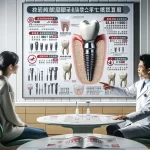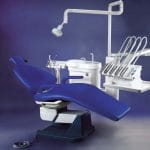Are you overdue for a dental cleaning but concerned about how much time it will take from your busy schedule? Regular dental cleanings are crucial for maintaining healthy teeth and gums, yet many people hesitate to book their appointments due to uncertainty about the process.
In this article, we’ll demystify what happens during a typical dental cleaning appointment and how long you can expect it to last. Plus, we’ll share some valuable tips to make your cleaning as quick and comfortable as possible.
What Is a Dental Cleaning?
A dental cleaning, often referred to as an oral prophylaxis, is a preventive treatment designed to remove plaque, tartar, and stains from your teeth. Typically performed by a dental hygienist, it is recommended every six months for most patients.
The Main Goals of a Dental Cleaning Include:
- Removing Plaque and Tartar: Eliminating buildup that can lead to tooth decay and gum disease.
- Polishing Teeth: Enhancing the appearance of your smile by removing surface stains.
- Early Detection: Identifying potential oral health issues early on for timely monitoring or treatment.
Even with diligent brushing and flossing at home, it’s nearly impossible to remove all plaque and tartar that accumulate over time. This is why regular professional cleanings are essential for maintaining optimal oral health.
How Long Does a Standard Dental Cleaning Take?
For most patients, a standard dental cleaning appointment lasts between 30 minutes to an hour. However, the actual cleaning portion performed by the hygienist typically takes about 30 minutes on average.
Factors Influencing Appointment Length:
- Your Oral Health: If your teeth and gums are healthy, the cleaning will likely be quicker. Conversely, significant plaque or tartar buildup may require more time.
- X-Rays and Exams: Most appointments begin with an exam and X-rays (if necessary), which can add extra time.
- Consultation Time: After the cleaning, your dentist will review your X-rays and conduct a final exam, usually taking an additional 10-15 minutes.
So while the cleaning itself is generally around 30 minutes, you should plan for your entire visit to last closer to an hour when including the exam and consultation. Individual needs may vary.
What Happens During a Dental Cleaning Procedure?
A typical dental cleaning involves several key steps:
- Initial Oral Exam: Your hygienist will conduct a quick visual examination of your teeth and gums. X-rays may be taken if it’s been a while since your last set.
- Plaque and Tartar Removal: Using specialized tools, your hygienist will carefully remove any plaque and tartar buildup from your teeth, especially along the gum line. This process is generally painless.
- Tooth Polishing: After tartar removal, your hygienist will polish your teeth using gritty toothpaste and a high-powered electric brush to eliminate any remaining plaque and surface stains.
- Flossing: Thorough flossing between each tooth helps remove leftover debris. Your hygienist may also demonstrate proper flossing techniques.
- Fluoride Treatment (Optional): Depending on your oral health needs, a fluoride gel or varnish may be applied post-cleaning to strengthen enamel and prevent cavities.
- Final Dental Exam: Your dentist will perform a comprehensive exam of your mouth, reviewing X-rays and discussing any necessary treatment recommendations.
While these steps are thorough, an experienced hygienist can typically complete them in about 30 minutes for patients with good oral hygiene.
Factors That Can Extend Cleaning Time
Certain factors may cause a dental cleaning to take longer than the average 30-60 minutes:
- Severe Tartar Buildup: If it’s been a while since your last cleaning or you have heavy tartar deposits, more time will be needed for careful removal.
- Gum Disease: Conditions like gingivitis or periodontitis complicate cleanings. Patients with inflamed gums may require deeper cleanings (scaling and root planing), which often necessitate multiple appointments.
- Sensitive Teeth: If you have sensitive teeth, inform your hygienist at the start of your appointment so they can adjust their technique accordingly.
- Extensive Dental Work: Patients with crowns, bridges, implants, or other restorations may need additional care during cleanings to avoid damage.
While these factors can extend appointment times, it’s crucial not to rush the process. Your hygienist aims to be thorough in order to maintain your oral health effectively.
Tips for an Efficient and Comfortable Dental Cleaning
Want to minimize your time in the dental chair? Here are some practical tips:
- Don’t Skip Appointments: Staying consistent with cleanings every six months prevents heavy tartar accumulation, making appointments quicker.
- Practice Good Oral Hygiene at Home: Regular brushing and flossing reduce plaque buildup between visits.
- Communicate Openly with Your Hygienist: Inform them about any sensitivity issues upfront so they can adjust their approach for comfort.
- Consider Splitting Up Long Appointments: For intensive cleanings like scaling and root planing, ask about breaking them into multiple visits for manageability.
Ultimately, while most cleanings can be completed in an hour or less, it’s essential to allow your hygienist the necessary time to perform their work thoroughly. Your smile deserves it!
The Bottom Line: Regular Dental Cleanings Are Worth the Time
Dental cleanings play a vital role in maintaining lifelong oral health. Although scheduling these appointments might seem burdensome at times, they typically require just 30-60 minutes every six months—a small investment for significant benefits.
Consider all that regular cleanings prevent—cavities, gum disease, bad breath, and unsightly stains—and you’ll see that this commitment pays off in spades. Don’t delay your next cleaning; trust that your dental team is dedicated to making the process as efficient and comfortable as possible!
Are dental cleanings painful?
For most people, dental cleanings are not painful. You may feel slight discomfort or sensitivity during the scaling process, but it should not hurt. If you have very sensitive teeth or gums, let your hygienist know so they can adjust their technique.
How often do I need a dental cleaning?
The American Dental Association recommends getting a professional cleaning and exam every six months for optimal oral health. Some people may need more frequent cleanings if they are prone to tartar buildup or gum disease. Your dentist can advise you on the best cleaning schedule for your needs.
Is it safe to get a dental cleaning while pregnant?
Yes, dental cleanings are safe and recommended during pregnancy. Pregnancy can increase your risk of gum disease due to hormonal changes, so it’s important not to skip your cleaning. Just let your dental office know you are pregnant when scheduling your appointment.
What happens if I don’t get regular dental cleanings?
Skipping dental cleanings allows plaque and tartar to accumulate on your teeth over time. This buildup greatly increases your risk of developing tooth decay, gum disease, bad breath, and stains. It can also make future cleanings take much longer and feel more uncomfortable. Staying on top of twice-yearly cleanings is the best way to avoid extensive dental work down the road.







